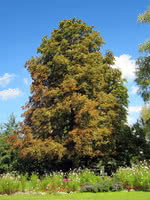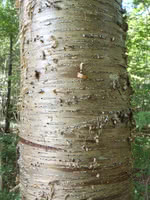Mon-Fri 9am - 5pm Mountain time
Horse Chestnut vs Yellow Birch
Aesculus hippocastanum
Betula alleghaniensis
CUSTOM GROW
NOT AVAILABLE THIS SEASON - MIGHT RETURN
Horse Chestnut is a medium sized deciduous tree that is native to Greece but has been grown in North America for hundreds of years. It produces large nuts.
A top CO2 absorbing species. Experts think this tree may help climate change more than others.
Yellow Birch is a large and valuable hardwood species in northeastern North America. The bark on its limbs and young trunks is silvery-yellowish in colour, hence the name. This tree prefers to grow in cool regions with damp or saturated soil.
Yellow Birch can be tapped for syrup, like Sugar Maple. Although the sap has less sugar content, it flows in greater quantity than maple trees.
Note: Unfortunately this difficult to grow species is not currently scheduled to grow at TreeTime.ca. Perhaps try purchasing seed from SeedTime.ca and growing your own? Or sign up for a restock notification above.
Horse Chestnut Quick Facts
Yellow Birch Quick Facts
Toxicity: most parts of plant are toxic

